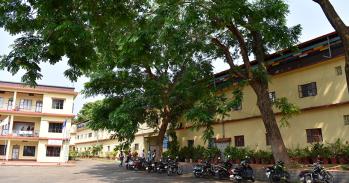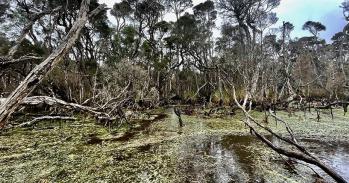
A new exhibition unveils the work of a unique study into some of the most bitterly divided cities in the world, such as Jerusalem and Belfast, showing how daily life adapts to, defines and defies boundaries in spaces of urban conflict.
A new exhibition unveils the work of a unique study into some of the most bitterly divided cities in the world, such as Jerusalem and Belfast, showing how daily life adapts to, defines and defies boundaries in spaces of urban conflict.
Cities don’t function like states, and urban areas that have national frontiers running through them are the most volatile, but can also lead the way in demonstrating how conflict can be resisted.
Dr Wendy Pullan
Jerusalem, Belfast, Beirut, Mostar – Mention these cities to most people and they will conjure scenes of bullet-sprayed walls, barbed wire fences and militarized zones, the images that appear on TV screens around the world. But some people will think just one word – home. Cities of conflict and the boundaries within them are not just defined by the politics and violence of the moment, but also by the daily throng of the population as they go about their lives: shopping, schooling, socialising and so on.
You can listen to a podcast on the research here:
The Capturing Urban Conflicts exhibition, which runs from 19 – 23 October in Cambridge and then from 3 – 5 November in London as part of the ESRC’s ‘Festival of Social Sciences’, was developed by the Conflict in Cities team at the University of Cambridge. Using photo-essays and a fresh cartographic approach to go beyond the media snapshots of these cities, the exhibition gives people a sense of life in areas of urban conflict, and how areas of conflict are constantly shifting.
“We created a series of unique maps that show the spectrum of not just boundaries, but also transitional and mixed spaces that exist within contested cities”, says Dr Wendy Pullan, Principal Investigator on Conflict in Cities, “This exhibition challenges the perception of these cities often generated by the media, using maps and photography to provide a window on life in the conflict areas, highlighting not just the resilience but, sometimes, even vibrancy.”
Based in the Department of Architecture, the research has involved comparative mapping of nine divided cities at different stages of their transition through conflict, focusing on the two key cities of Belfast and Jerusalem. Usually, maps of these cities don’t display contested areas and flash-points, but this is what the team focused on. The exhibition features a special section of maps devoted to Jerusalem.
“We have drawn all the maps in the same hand using the same graphic conventions to allow for proper comparison, which hasn’t been done before” says Pullan. “Details in the divisions in many of these cities are not properly mapped. One reason is that they change so frequently, but it is also very often extremely politically charged.”
“A case in point is Jerusalem. We produced two different maps showing how Israel sees the city, and how Palestine sees it – they obviously don’t match and we are not trying to make them, but if you compare the two, by the same hand at the same scale, you get a better picture of where the divisions are, how they are fluctuating, and the patterns that emerge.”
The team look at the range of interaction within the zones where conflicting areas meet, what they refer to as the ‘spectrum of engagement’. Of course this can be antagonistic, but it can also be casual and generous interaction between ostensibly hostile factions. “Cities don’t function like states,” says Pullan, “and urban areas that have national frontiers running through them are the most volatile, but can also lead the way in demonstrating how conflict can be resisted, and even potentially absorbed, through the environment people create in their quest to live as best they can.”
An example is the neighbourhood of French Hill in Jerusalem. A settlement for Israeli Jews, in what is a fairly recent phenomenon some Palestinians have been buying houses and renting flats there. “French Hill is near the university and Hadasa hospital, the housing and municipal services are so much better” says Pullan. “We did some research on Palestinians in the neighbourhood, even checking names on mailboxes, as there are just no statistics around this at the moment. A few people voiced the idea that this is a type of re-colonisation, but others want to be quiet about it and get on with their lives.”
It can be easy to view conflict as simply two states – war and peace – but all these urban areas are in an in-between state, and in this landscape the smallest presentation decisions, such as what colour you paint your door, can become highly value-laden. Street art takes on huge political significance, and the team found that many of the cities actually reference each other, defining themselves as ‘divided cities’ and showing solidarity with other urban areas.
“Many people tell us ‘you can’t compare us with anywhere else’, conflict is such a strong part of a divided city’s identity,” says Pullan, “but the more politically aware citizens often notice comparisons with other cities, and referenced this on the streets.” This is particularly strong with regard to Belfast and Jerusalem: from murals of the Jerusalem separation barrier on the Falls Road in Belfast, to graffiti in East Jerusalem imploring passers-by to ‘learn from Northern Ireland’.
Physical landmarks of conflict can end up frozen for memorial purposes, and this identification of a city as conflicted even extends to tourism in some instances. “Conflict tourism is a going concern, there’s a group of former prisoners who guide tours in Belfast for example” says Pullan. “Tourism is a huge battleground in Jerusalem of course, people use it to legitimise their own causes. Berlin is an interesting example not just of a city that has emerged from its divided state in many ways, but for how much interest there is in recreating evidence of the divide, and how popular a tourist destination it is.”
“Urban populations are dramatically increasing. Cities are full of diversity by their very nature, which can create centres of culture and learning. However, as contact zones between ethnic, political and class groups, and strategic centres of power, they may also be arenas of dissent.”
“By 2030, 92.2% of Britons are expected be living in urban areas and, as was startlingly proved in London earlier in the year, we are far from immune to explosions of urban conflict. We hope this exhibition reveals how inhabitants of contested cities survive, resist, dominate, cope, ignore and imagine their fraught existences.”
Capturing Urban Conflict can be seen at the Department of Architecture in Cambridge between 19 – 23 October as part of the Festival of Ideas, then at the Department of Architecture at London Metropolitan University between 3 – 5 November as part of the ESRC’s Festival of Social Sciences.
This work is licensed under a Creative Commons Licence. If you use this content on your site please link back to this page.





